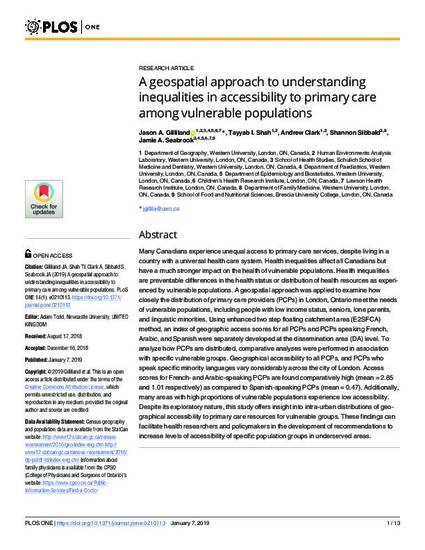
Many Canadians experience unequal access to primary care services, despite living in a country with a universal health care system. Health inequalities affect all Canadians but have a much stronger impact on the health of vulnerable populations. Health inequalities are preventable differences in the health status or distribution of health resources as experienced by vulnerable populations. A geospatial approach was applied to examine how closely the distribution of primary care providers (PCPs) in London, Ontario meet the needs of vulnerable populations, including people with low income status, seniors, lone parents, and linguistic minorities. Using enhanced two step floating catchment area (E2SFCA) method, an index of geographic access scores for all PCPs and PCPs speaking French, Arabic, and Spanish were separately developed at the dissemination area (DA) level. To analyze how PCPs are distributed, comparative analyses were performed in association with specific vulnerable groups. Geographical accessibility to all PCPs, and PCPs who speak specific minority languages vary considerably across the city of London. Access scores for French- and Arabic-speaking PCPs are found comparatively high (mean = 2.85 and 1.01 respectively) as compared to Spanish-speaking PCPs (mean = 0.47). Additionally, many areas with high proportions of vulnerable populations experience low accessibility. Despite its exploratory nature, this study offers insight into intra-urban distributions of geographical accessibility to primary care resources for vulnerable groups. These findings can facilitate health researchers and policymakers in the development of recommendations to increase levels of accessibility of specific population groups in underserved areas.

Also available open access in PLoS One at; https://doi.org/10.1371/journal.pone.0210113